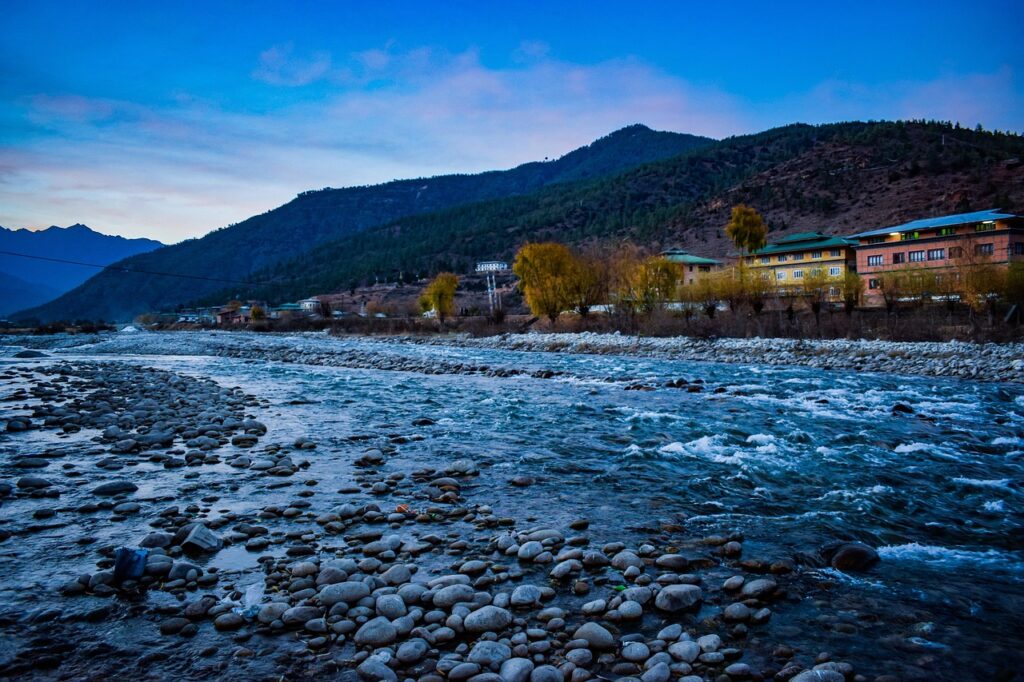
I was awed by Bhutan’s tranquil beauty and the harmonious fusion of culture and nature when I first arrived. Travelers looking for peace and adventure have long turned to Bhutan Tourism, and 2025 looks to be a remarkable year to visit this fascinating kingdom. Bhutan has something to offer everyone with its dedication to eco-friendly travel and distinctive cultural experiences.
Why Bhutan in 2025?
Bhutan Tourism is flourishing, and 2025 is anticipated to be a historic year for tourists. To improve tourism while protecting its natural and cultural heritage, the nation has launched new projects. Bhutan is prepared to embrace visitors from around the world with eco-friendly lodging and redesigned trekking routes.
Sustainable Tourism: A Core Principle
Sustainability is the bedrock upon which Bhutan Tourism stands. Policies have been put in place by the government to guarantee that tourism enhances the local economy while reducing its negative effects on the environment. The “High Value, Low Volume” policy, for example, makes sure that mass tourism doesn’t ruin the nation. Even more environmentally friendly options, like solar-powered lodges and organic dining options, should be available to tourists in 2025.
Cultural Immersion
Bhutan Tourism has a rich cultural heritage, which is one of its highlights. In 2025, tourists can take part in lively celebrations that highlight traditional dances, music, and rituals, such as the Paro Tshechu and Thimphu Tshechu. These celebrations are more than just occasions; they offer a glimpse into the essence of Bhutanese culture.
A Guide to Bhutan’s Must-See Destinations in 2025
I became aware of Bhutan’s diversity and stunning sights while I was traveling throughout the country. From historic monasteries to unspoiled natural settings, Bhutan Tourism guarantees that each location offers a distinctive experience. The following locations are essential for your ideal 2025 journey:
1. The Paro Valley
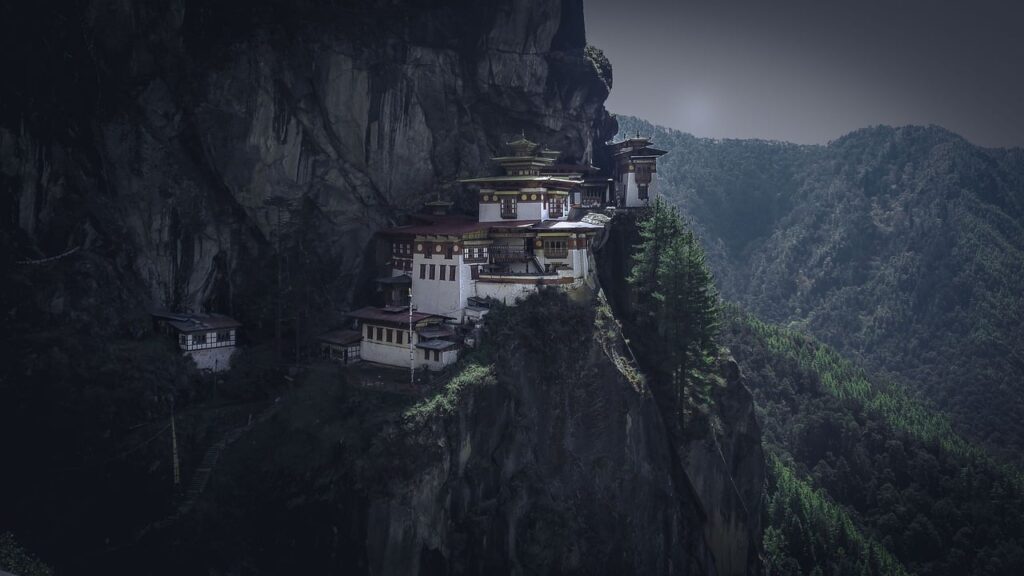
Bhutan’s only international airport is located in the Paro Valley, which serves as the country’s entry point. For those who are passionate about architecture and history, the valley is a utopia. The famous Taktsang Palphug Monastery, also known as Tiger’s Nest, is located here, atop a cliff. Both a spiritually significant location and a representation of Bhutan Tourism, it is both. Remember to visit the Rinpung Dzong, a fortress-monastery featuring elaborate woodwork and murals that showcase Bhutanese culture.
2. Punakha
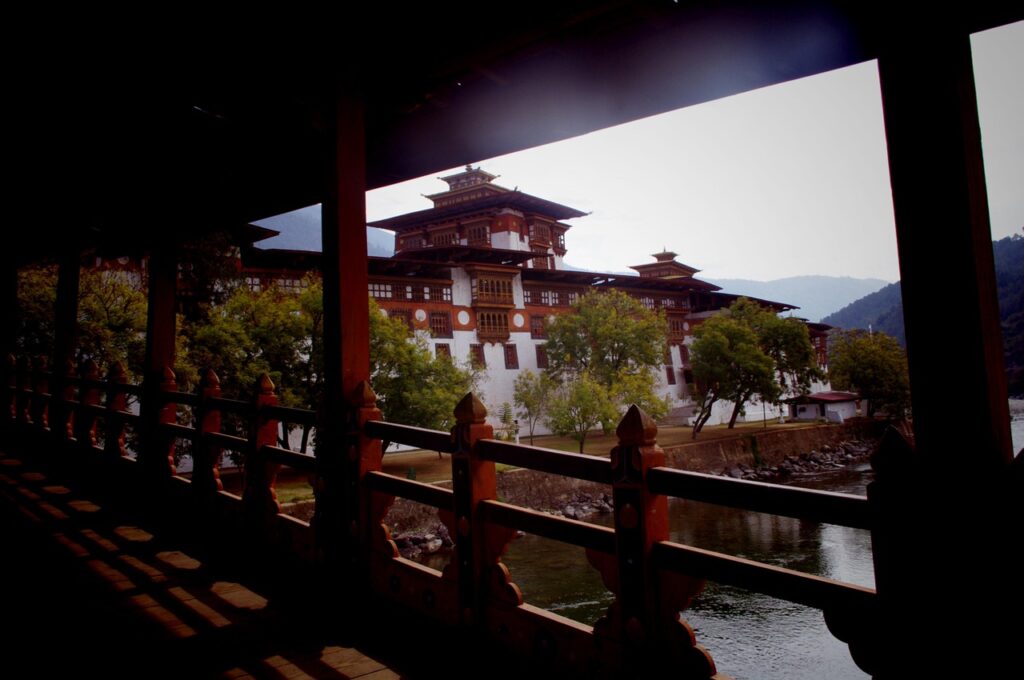
The Punakha Dzong, also known as the “Palace of Great Happiness,” is the reason Punakha is so famous. One of the best examples of Bhutanese architecture is this magnificent building. Situated at the meeting point of the Pho and Mo rivers, it is especially stunning in the spring when the jacaranda trees bloom all around. The Punakha Suspension Bridge, which provides sweeping views of the lush valley, is another attraction that Bhutan Tourism suggests.
3. Thimphu
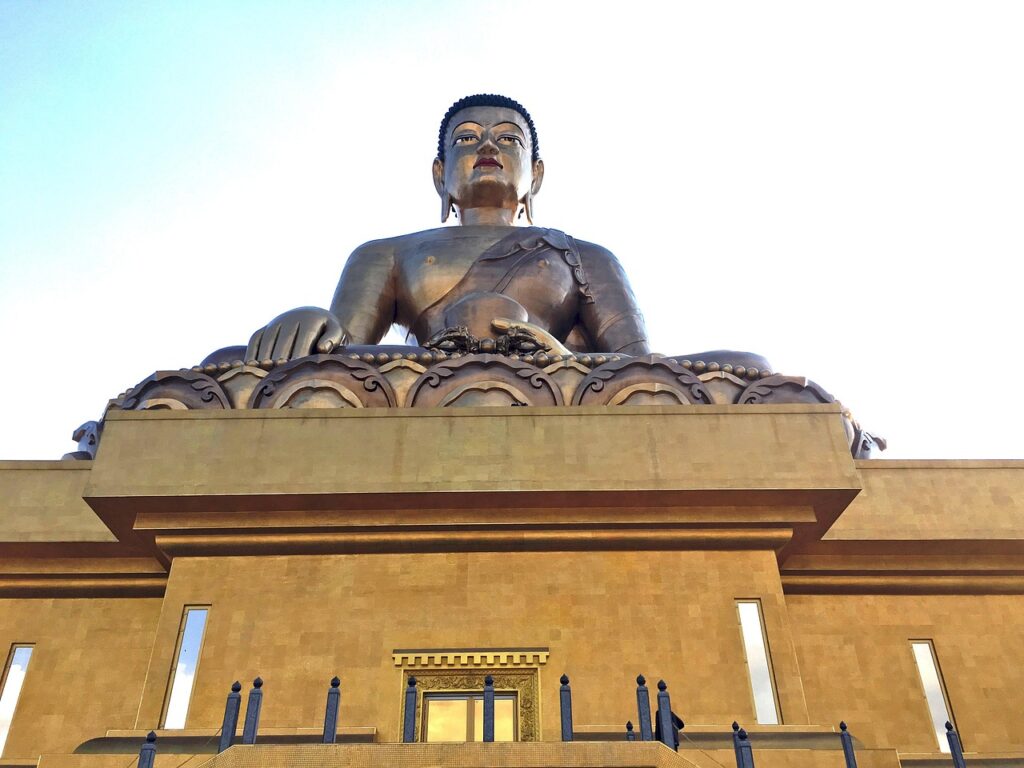
The capital city of Thimphu is a tasteful blend of modernity and tradition. While maintaining its cultural core, it provides an insight into Bhutan’s evolution. This blending is demonstrated by the Buddha Dordenma, a massive statue that looks out over the city. Bhutan Tourism emphasizes Thimphu’s weekend market, where you can purchase organic produce, handicrafts, and trinkets made locally.
4. The Valley of Phobjikha
The Phobjikha Valley is a little piece of heaven for those who enjoy the outdoors. The endangered black-necked cranes can be found in this glacial valley, which is a part of Bhutan’s ecological conservation efforts. Here, Bhutan Tourism offers guided tours that let guests discover more about these amazing birds while taking in the tranquil surroundings.
5. The Valley of Haa
One of Bhutan’s lesser-known gems is still the Haa Valley. For tourists who wish to avoid the crowds, it provides an experience that is not often found. The valley is the ideal getaway for people looking for peace and quiet because of its serene villages and alpine forests. Homestay programs, which provide an authentic look into local life, have recently been introduced by Bhutan Tourism.
The Trekking Trails in Bhutan
The emphasis on adventure is among the best features of Bhutan Tourism. The nation is updating its trekking routes in 2025 to offer safer and greener experiences.
The Trek of Jomolhari
The Jomolhari Trek is a popular adventure that is frequently referred to as the pinnacle of Bhutan Tourism. It provides breathtaking views of the 7,326-meter-tall Mount Jomolhari. You’ll pass through charming villages and yak pastures while traveling, where you’ll meet people who will share their customs and stories.
The Trek of the Snowman
The Snowman Trek, regarded as one of the world’s most difficult treks, is not for the weak of heart. It takes you through some of Bhutan’s most isolated and pristine areas over the course of 25 days. Bhutan Tourism prioritizes sustainability and safety by making sure that knowledgeable guides are available for this trek.
The Trek of the Druk Path
The Druk Path Trek is a great option if you’re pressed for time. This five-day hike, which links Paro and Thimphu, offers sweeping views of the Himalayas and the opportunity to visit historic monasteries along the way. The trail markers have recently been improved by Bhutan Tourism, making it easier for novices to follow.
Bhutan’s Festivals: An Extravaganza of Culture
Festivals, referred to locally as “Tshechus,” are among the most exciting aspects of Bhutan Tourism. These festivities serve as spiritual gatherings that unite communities and are more than just events. The festivals’ distinctive fusion of spirituality, tradition, and entertainment is predicted to draw even more foreign tourists in 2025.
Tshechu Paro
A must-see event, the Paro Tshechu is held in the famous Rinpung Dzong. The captivating mask dances performed at this festival tell tales from Bhutanese mythology. In order to foster a deep cultural bond, Bhutan Tourism makes sure that tourists can take part in or watch these dances.
Tshechu Thimphu
The Thimphu Tshechu is a spectacular event and one of the biggest festivals in the nation. It provides a striking exhibition of Bhutanese art and culture and is held in the capital. As a key component of cultural exploration in 2025, Bhutan Tourism highlights the festival’s significance in upholding Bhutan’s customs.
Drubchen Punakha
This festival, which is exclusive to the Punakha area, recreates the historic Bhutanese triumph over Tibetan invaders. The event offers attendees an enriching experience by fusing traditional rituals with theatrical performances. This festival is promoted by Bhutan Tourism as a chance to learn more about Bhutan’s history and resiliency.
Bhutan’s Cuisine: A Gastronomic Journey
Bhutan is no exception to the rule that a trip is not complete without sampling the local cuisine. Bhutan Tourism offers visitors a variety of tasty and distinctive culinary treats.
Ema Datshi
Ema Datshi, a fiery stew made with cheese and chili peppers, is frequently referred to as the national dish. A mainstay of Bhutanese cooking, it is a must-try for any traveler. For a genuine experience, Bhutan Tourism suggests serving it with red rice.
Momos
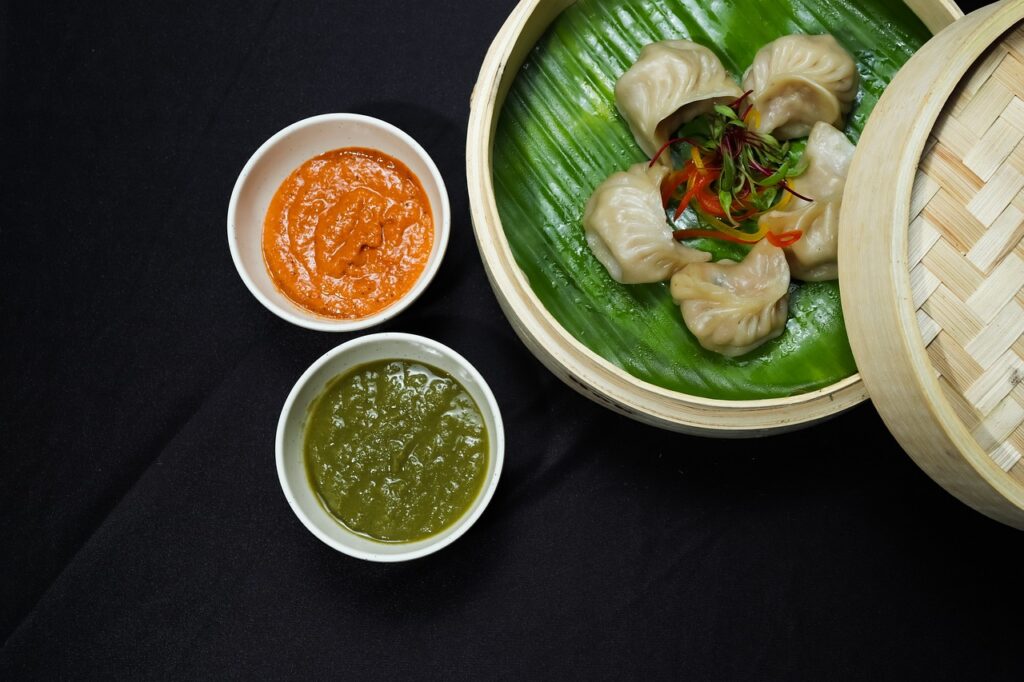
Both locals and visitors love these steamed dumplings. They are a great on-the-go snack because they are packed with different ingredients, such as vegetables or minced meat.
Ara
Ara, a traditional alcoholic beverage made from fermented rice or wheat, is a good choice for anyone interested in sampling Bhutanese local drinks. During homestays or cultural events, Bhutan Tourism encourages guests to responsibly sample it.
The 2025 Outlook for Bhutan Tourism
The growth of Bhutan Tourism has been steady, and 2025 is expected to set new records. Over 315,600 foreign visitors visited the nation in 2024, according to recent statistics, and estimates indicate that number will rise by 20% in 2025. This increase has been greatly aided by the launch of new cultural programs and ecotourism projects.
Demographics of Visitors
North America: 40%
Europe: 35%
Asia: 20%
Others: 5%
Average Outlays
Bhutan Tourism contributes significantly to the country’s economy, with international visitors spending an average of $250 per day.
Top Destinations for 2024 (and 2025):
1. Paro’s Tiger’s Nest Monastery
2. Dzong Punakha
3. Dordenma Buddha (Thimphu)
4. The Valley of Haa
5. The Valley of Phobjikha
In order to maintain its position as a top travel destination in 2025, Bhutan Tourism is still committed to improving the traveler experience.
Accommodations in Bhutan for 2025
Bhutan Tourism serves a broad spectrum of tourists, from those looking for opulent indulgence to those who would rather have a more economical stay. I was astounded by the accommodations’ flawless integration of contemporary conveniences and traditional Bhutanese architecture during my visit.
Luxurious Getaways
Bhutan offers a number of upscale resorts and lodges for tourists who wish to experience luxury. The Amankora and Six Senses lodges, for example, provide top-notch service, spa services, and stunning views of the Himalayan scenery. Nightly rates range from $1,000 to $2,500, but the experience is well worth the money. Bhutan Tourism makes certain that these lodgings use eco-friendly technologies and locally sourced materials, among other sustainable practices.
Hotels in the Mid-Range
There are many mid-range hotels available to travelers who want comfort without going over budget. Cozy accommodations, friendly service, and delicious regional food are offered by establishments like the Dewachen Resort in Phobjikha Valley and the Hotel Bhutan in Thimphu. These stays are perfect for families or small groups because they typically cost between $150 and $300 per night.
Low-Cost Accommodations
Budget-friendly choices like homestays, guesthouses, and hostels are available from Bhutan Tourism. Immersion in Bhutanese culture is particularly possible through homestays. Budget lodgings cost between $30 and $80 per night, and staying with a local family is an invaluable experience.
Bhutan’s Initiatives for Sustainable Tourism
Bhutan Tourism aims to preserve the nation as well as promote it. Bhutan’s emphasis on cultural preservation and environmental conservation really touched me. A number of projects are planned for 2025 to further establish Bhutan as a pioneer in environmentally friendly travel.
Neutrality of Carbon
One of the few carbon-negative nations in the world is Bhutan, in case you were unaware. Bhutan Tourism promotes ecotourism in order to actively support this status. For instance, lodging establishments are implementing renewable energy sources, and numerous tour operators are providing carbon offset programs.
Management of Waste
Bhutan is taking on the global problem of plastic waste. Strict waste management regulations, such as a prohibition on single-use plastics and comprehensive recycling initiatives, have been put in place by Bhutan Tourism. Additionally, travelers are urged to bring reusable bags and bottles.
Locally Based Travel
Bhutan Tourism guarantees that tourism activities directly benefit the local communities. Visits to rural villages where tourists can participate in traditional farming methods or learn Bhutanese crafts are frequently included in tour packages. The money raised by these programs is used to fund community development initiatives like constructing schools and medical facilities.
Bhutan’s Must-Haves for 2025 Travel
A few crucial details must be considered when organizing a trip to Bhutan in order to guarantee a smooth and joyful experience. Bhutan Tourism has simplified a number of procedures to facilitate foreign visitors’ travels.
Requirements for Visas
To enter Bhutan, all foreign visitors—aside from Indian nationals—need a visa. Travelers can now apply online through authorized tour operators thanks to Bhutan Tourism’s simplification of this procedure. Approval is typically quick, and the 2025 visa fee is still $40.
Fee for Sustainable Development (SDF)
The Sustainable Development Fee, which funds the nation’s initiatives to preserve its environment and culture, is a distinctive feature of Bhutan Tourism. The SDF, which includes lodging, meals, and admission to numerous attractions, is set at $200 per person per day in 2025. Even though the cost might seem high, it guarantees that Bhutan will always be pure and unaltered.
Packing Advice
Because Bhutan’s climate varies with altitude and season, it’s important to pack appropriately:
- Wearing layers of clothing is advised because temperatures can change, particularly in the mountains.
- Comfortable shoes are necessary for walking tours and trekking.
- Reusable Water Bottle: Since sustainability is a priority for Bhutan Tourism, many hotels offer refill stations.
Tips for 2025 Travelers from Bhutan Tourism
I can offer some advice that will improve your trip because I have firsthand experience in Bhutan:
1. Honor Local Customs: Since Buddhism is ingrained in Bhutanese culture, it’s crucial to wear modest clothing when visiting temples and monasteries.
2. Interact with Locals: In order to better understand the way of life of the people, Bhutan Tourism encourages visitors to engage with locals.
3. Stay Connected: Although Bhutan is renowned for its tranquil isolation, the majority of hotels now provide Wi-Fi so you can stay in touch while visiting.
A Concluding Remark
Bhutan Tourism in 2025 is a chance to experience a way of life that places a premium on happiness, sustainability, and cultural preservation in addition to visiting a stunning location. I developed a strong bond with this amazing nation as I traveled through its valleys, visited its historical landmarks, and ate meals with its people.
Bhutan ought to be at the top of your list for 2025 if you’re looking for an adventure that blends responsible tourism, cultural immersion, and scenic beauty. I’m excited to see what this magical kingdom has in store for the year because Bhutan Tourism offers an experience that is simply unmatched.
Follow me on Facebook: https://www.facebook.com/profile.php?id=61574792461434



